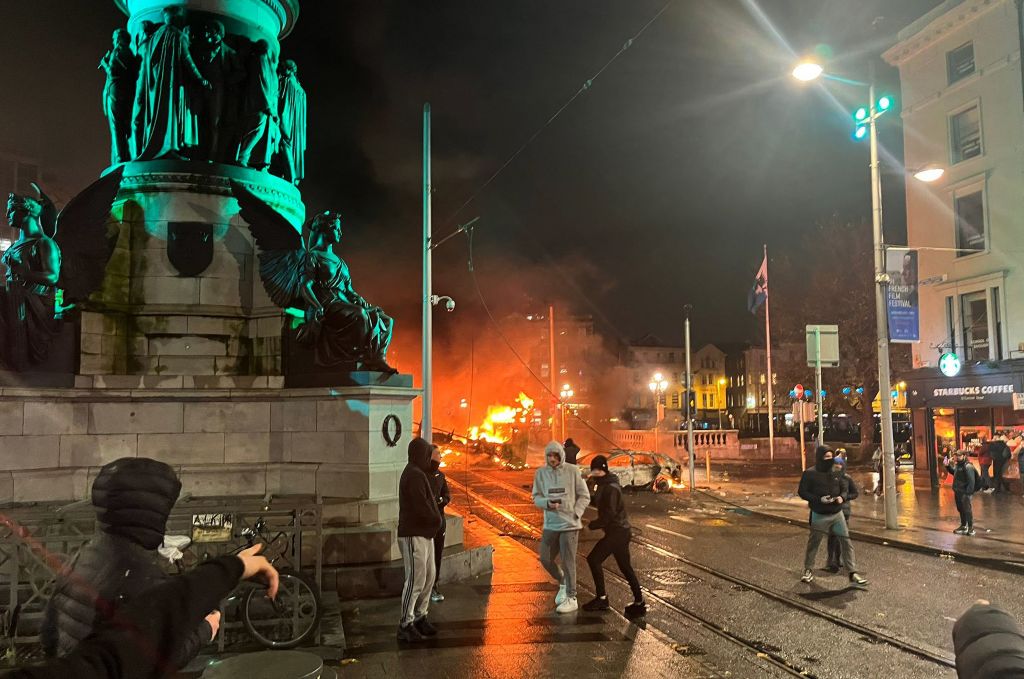Dublin Riots Twitter: Unraveling The Chaos Through Social Media
The Dublin riots that erupted recently have left the city grappling with unrest, and social media platforms, notably Twitter, have played a pivotal role in shaping public perception and response. As chaos unfolded in the streets, the digital landscape became a battleground for opinions, eyewitness accounts, and a plethora of hashtags that sought to encapsulate the turmoil. In this age of instant communication, understanding the dynamics of the Dublin riots through Twitter is crucial to grasping the broader implications of civil unrest in urban areas.
The events in Dublin were not just about physical confrontations; they highlighted the power of social media in mobilizing voices, spreading information, and sometimes, misinformation. With the click of a button, tweets can reach thousands, creating a ripple effect that can escalate or de-escalate a situation. The trending topic of "Dublin Riots Twitter" served as a barometer of public sentiment, showcasing the diverse perspectives of those involved and those watching from afar.
In this article, we will explore the Dublin riots through the lens of Twitter, delving into what sparked the unrest, how it was reported online, and the implications of social media in crisis situations. By analyzing tweets, hashtags, and the broader narrative, we aim to provide a comprehensive overview of this significant event and its representation on social media platforms.
What Sparked the Dublin Riots?
The Dublin riots were ignited by a series of events that escalated tensions within the community. Initially, a protest was organized to voice concerns over rising social issues, but it quickly spiraled into violence. Various factors contributed to the unrest, including:
- Economic disparities
- Social injustice
- Political discontent
- Increased police presence
How Did Social Media Influence the Riots?
Social media, particularly Twitter, acted as a double-edged sword during the Dublin riots. On one hand, it provided a platform for individuals to express their frustrations and share real-time updates. On the other, it also facilitated the spread of misinformation. Key ways social media influenced the riots include:
- Live updates from witnesses
- Videos and images that captured the chaos
- Community mobilization through hashtags
- Polarizing opinions that intensified divisions
What Were the Key Hashtags Used?
During the Dublin riots, several hashtags trended on Twitter, encapsulating the sentiments of the public and drawing attention to various aspects of the unrest. Some of the notable hashtags included:
- #DublinRiots
- #DublinUnrest
- #JusticeForDublin
- #DublinVoices
Who Were the Key Figures on Twitter During the Riots?
As the riots unfolded, various public figures, activists, and everyday citizens took to Twitter to express their views and share their experiences. Some notable individuals included:
- Local politicians who addressed the unrest
- Activists advocating for change
- Journalists providing coverage and analysis
What Impact Did the Riots Have on the Community?
The Dublin riots left a significant mark on the community, leading to a reevaluation of social policies and community relations. The aftermath included:
- Increased police scrutiny
- Calls for community dialogue
- Heightened awareness of social issues
How Did the Government Respond to the Riots?
The government’s response to the Dublin riots was multifaceted, as they sought to address the underlying issues while ensuring public safety. Their actions included:
- Emergency meetings with community leaders
- Implementation of curfews in affected areas
- Public statements addressing the causes of unrest
What Lessons Can Be Learned from the Dublin Riots Twitter Response?
The role of Twitter in the Dublin riots offers valuable lessons about the influence of social media in contemporary protests. Among the key takeaways are:
- The importance of accurate information dissemination
- The need for responsible communication from public figures
- The potential for social media to act as a tool for mobilization
Conclusion: The Future of Social Media in Civil Unrest?
As we reflect on the Dublin riots and their representation on Twitter, it becomes evident that social media will continue to play a crucial role in shaping the narrative of civil unrest. The ability to connect, inform, and mobilize individuals in real-time can either exacerbate tensions or foster understanding. For future protests and riots, the lessons learned from the Dublin riots Twitter response should guide how communities communicate and engage with one another in times of crisis.
**Barca UNICEF: A Beautiful Partnership For Change**
Exploring The World Of Twitter Gay Chacales: A Cultural Phenomenon
Unveiling The Charms Of Gay Seduction On Twitter


